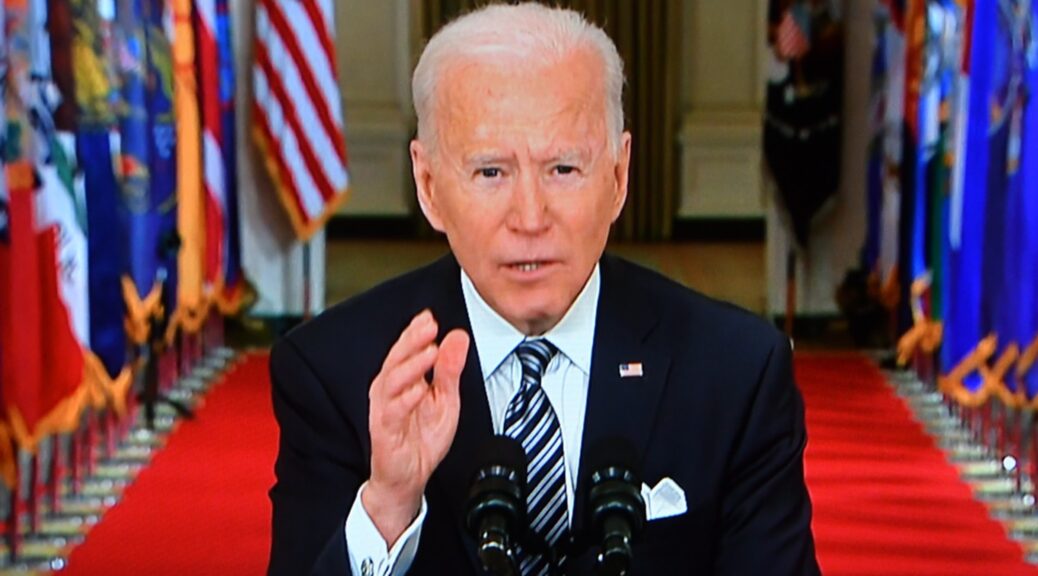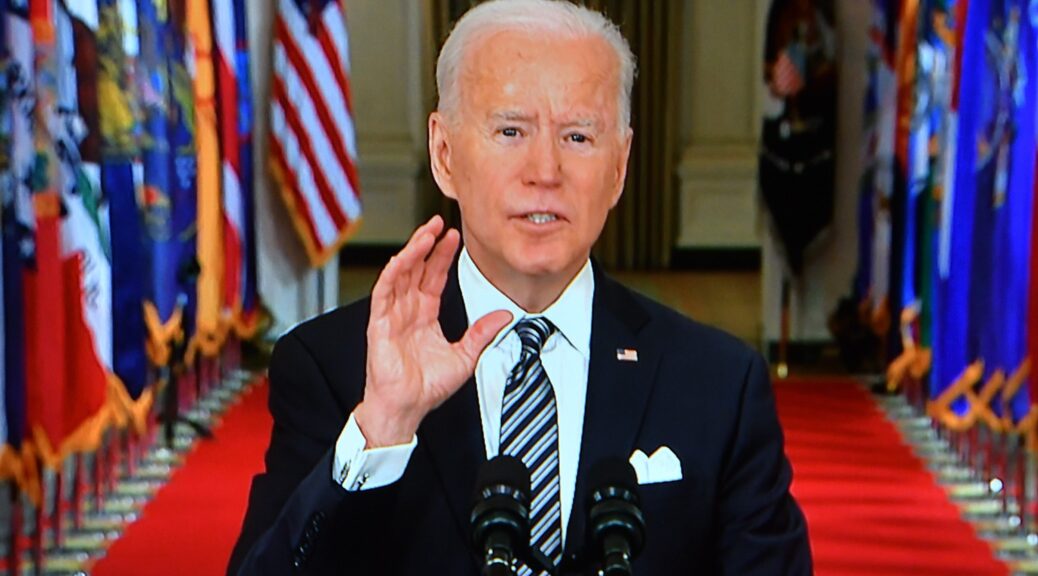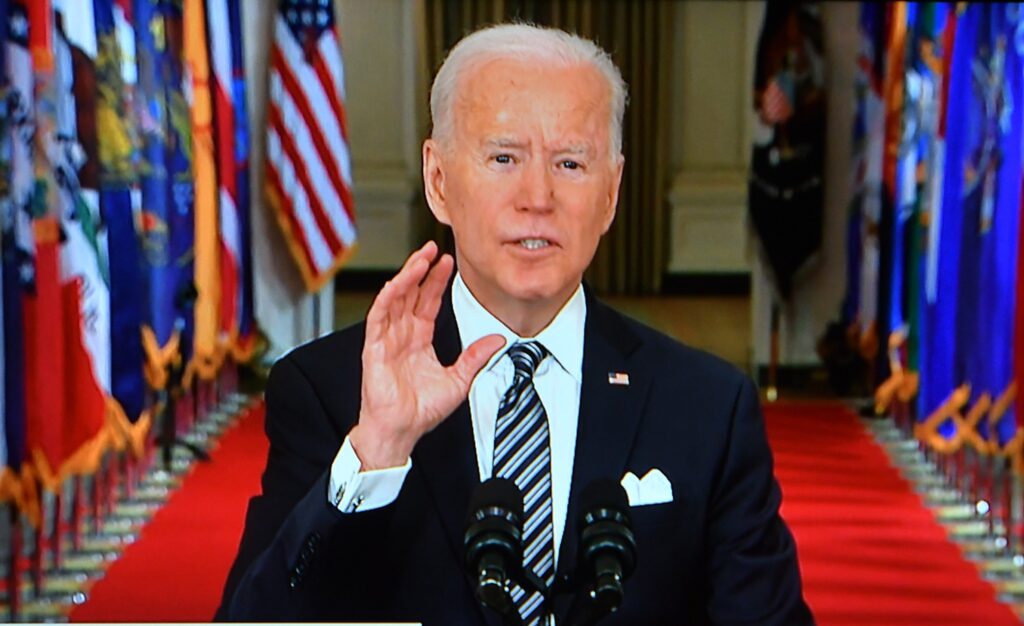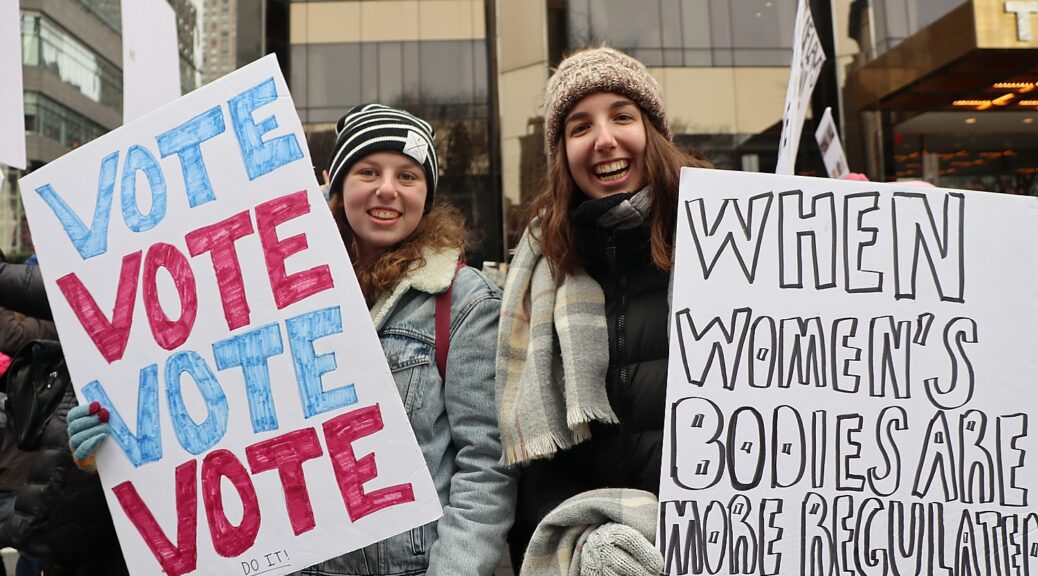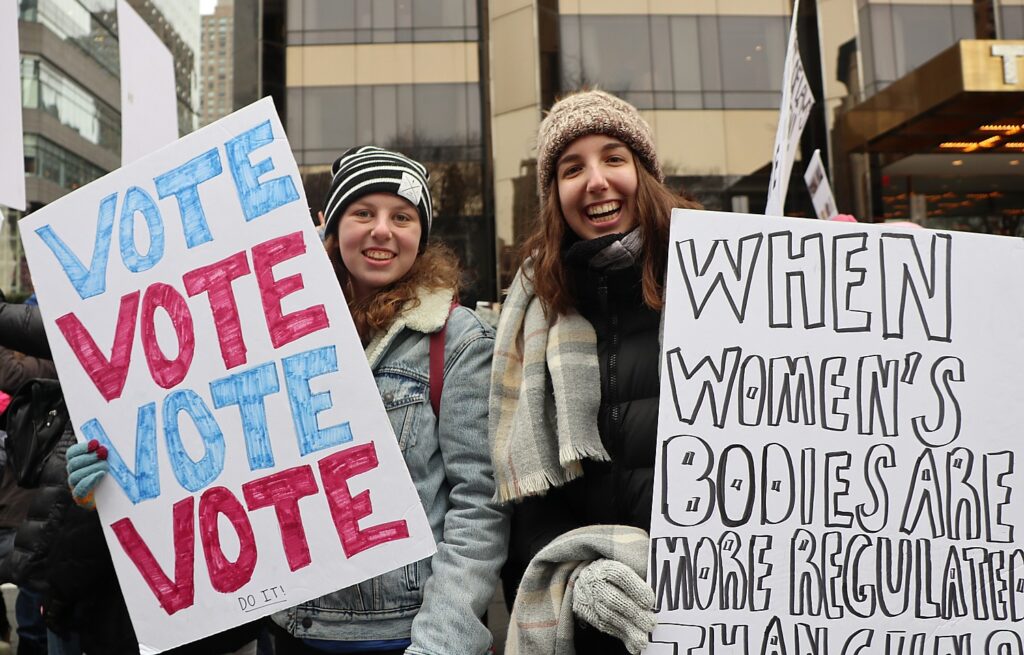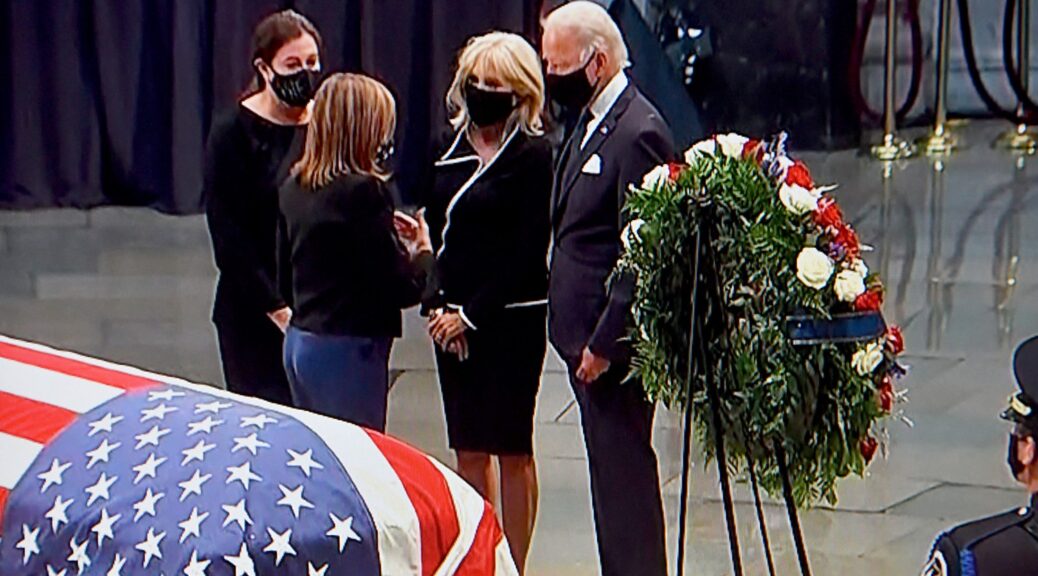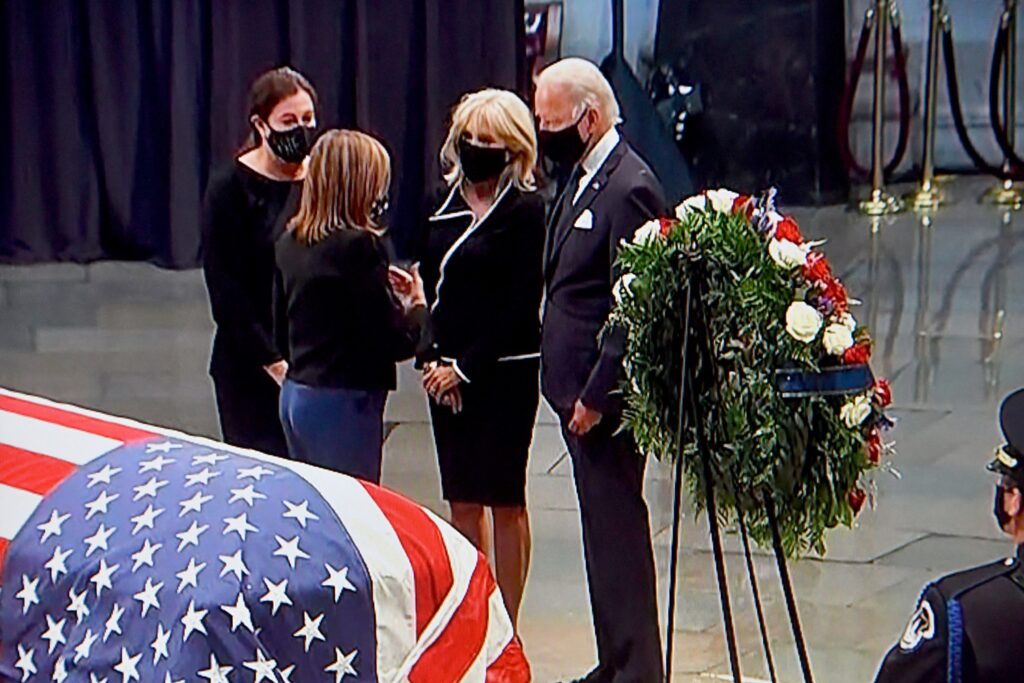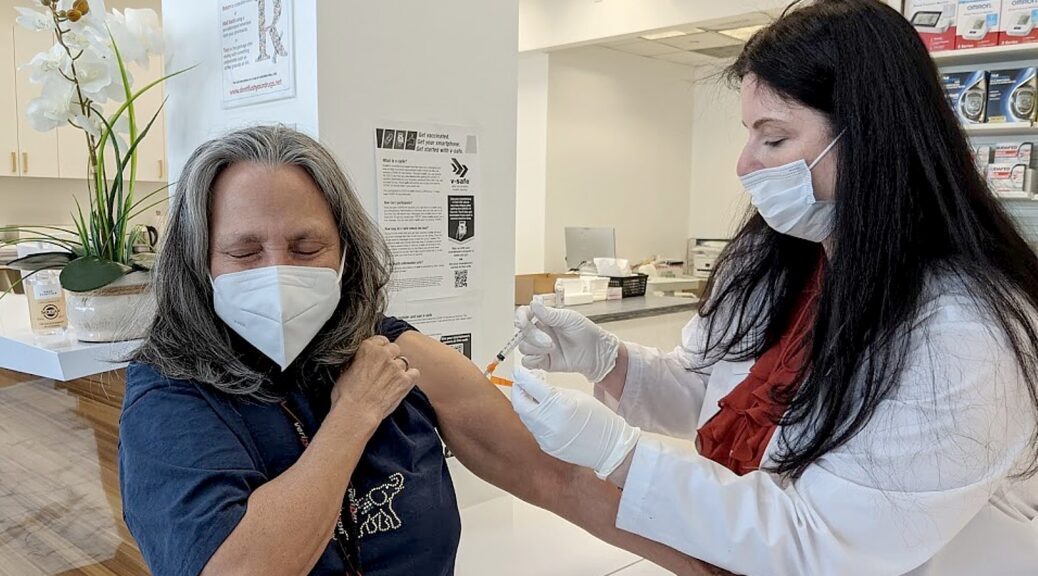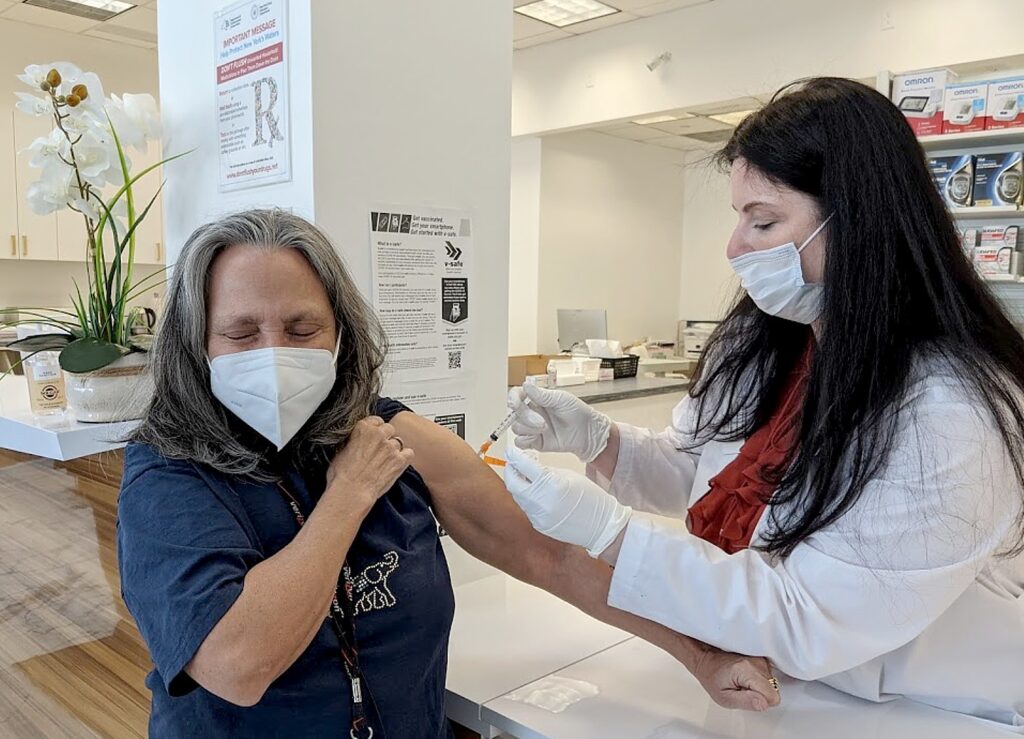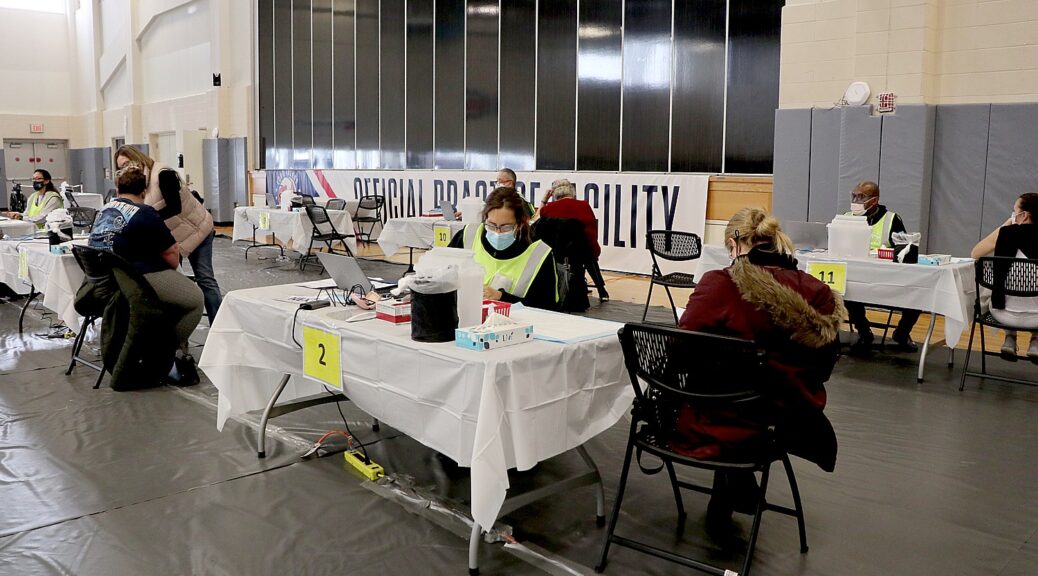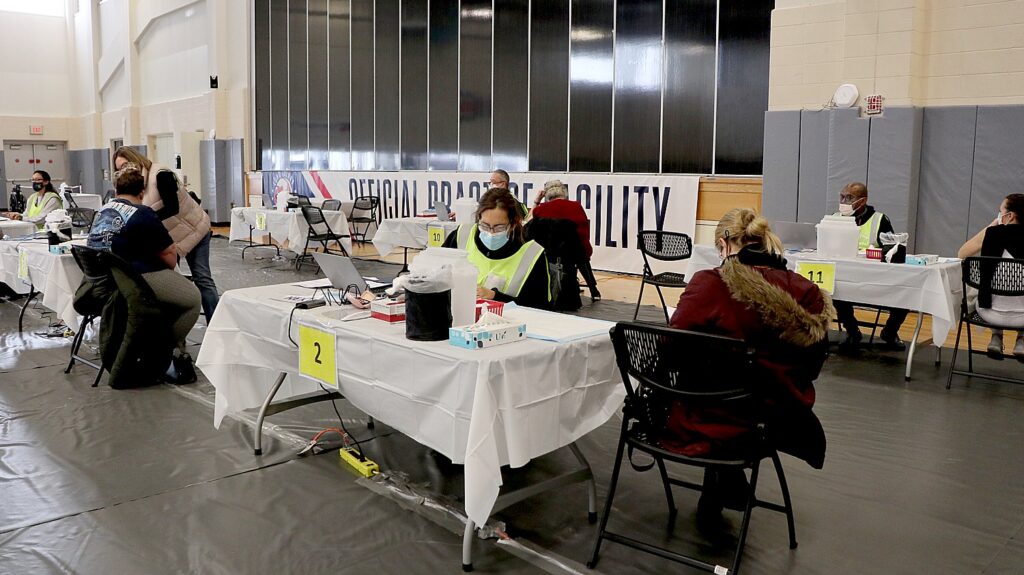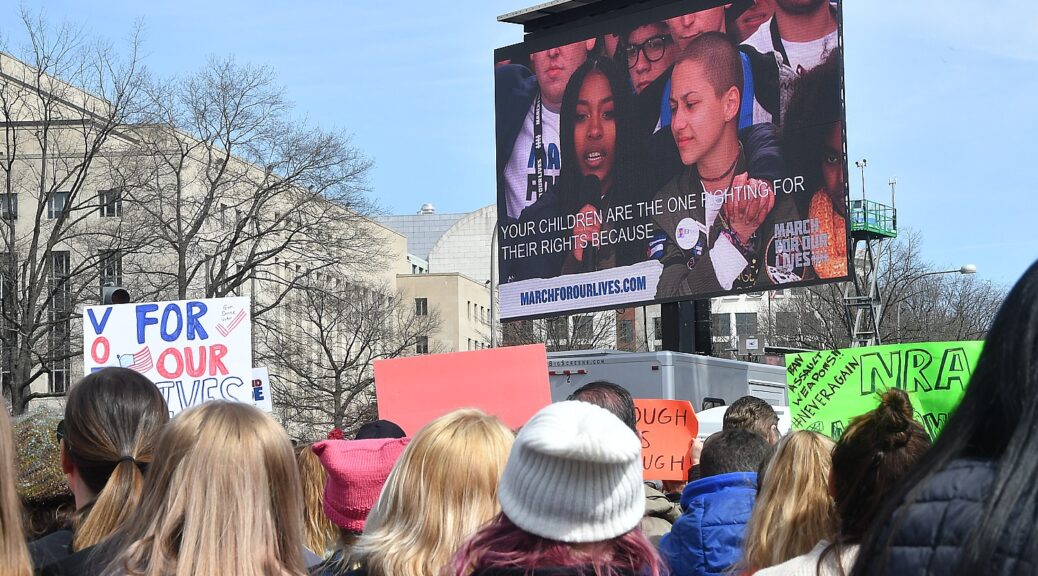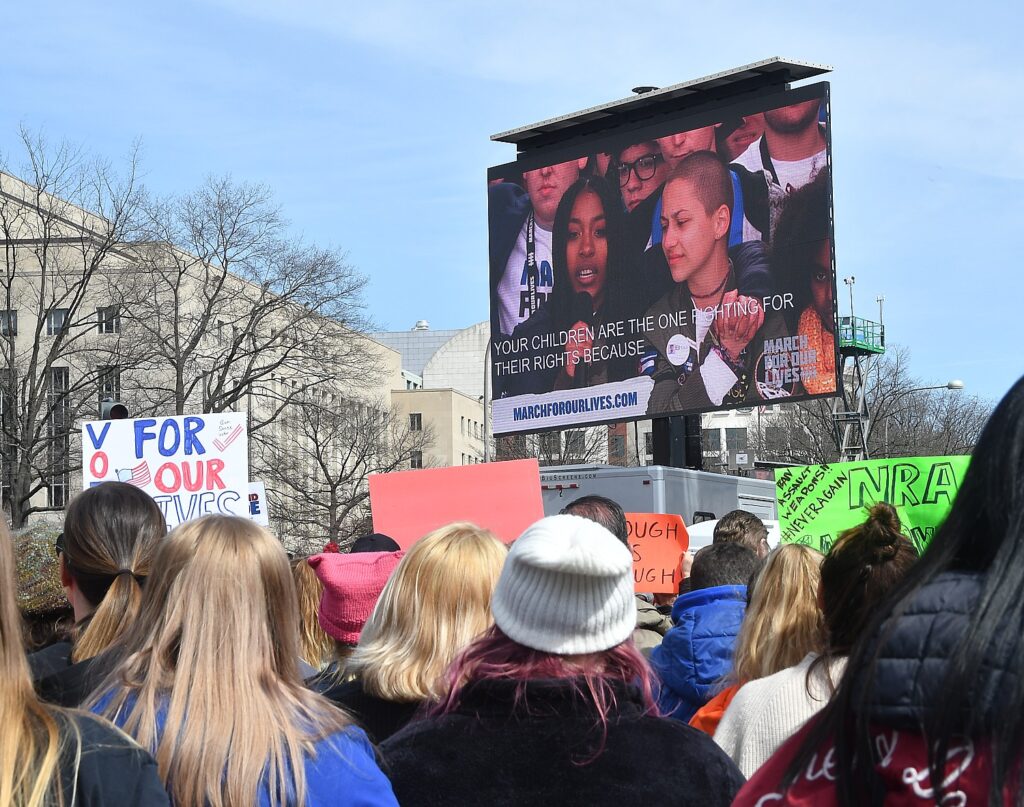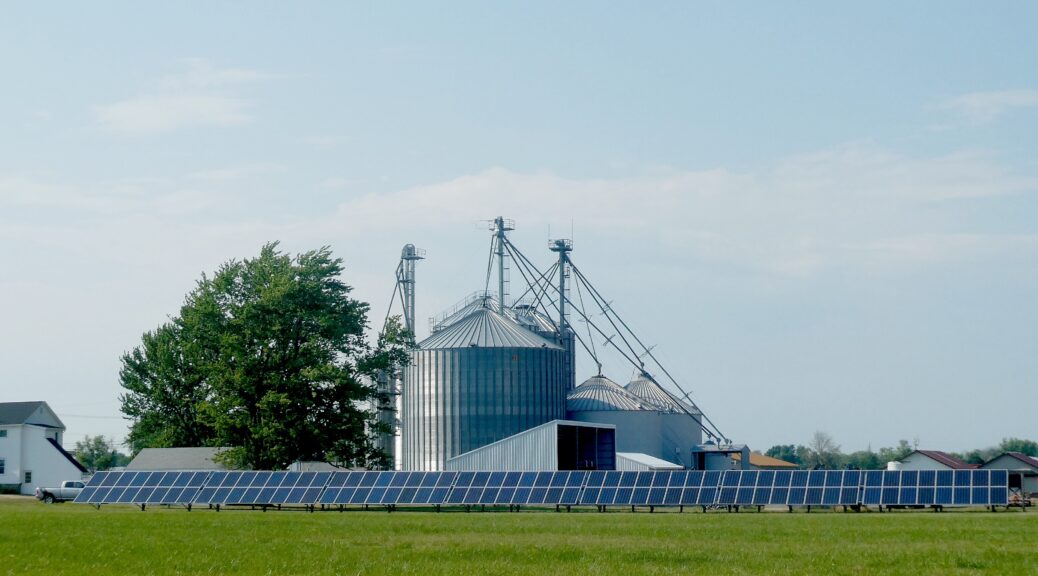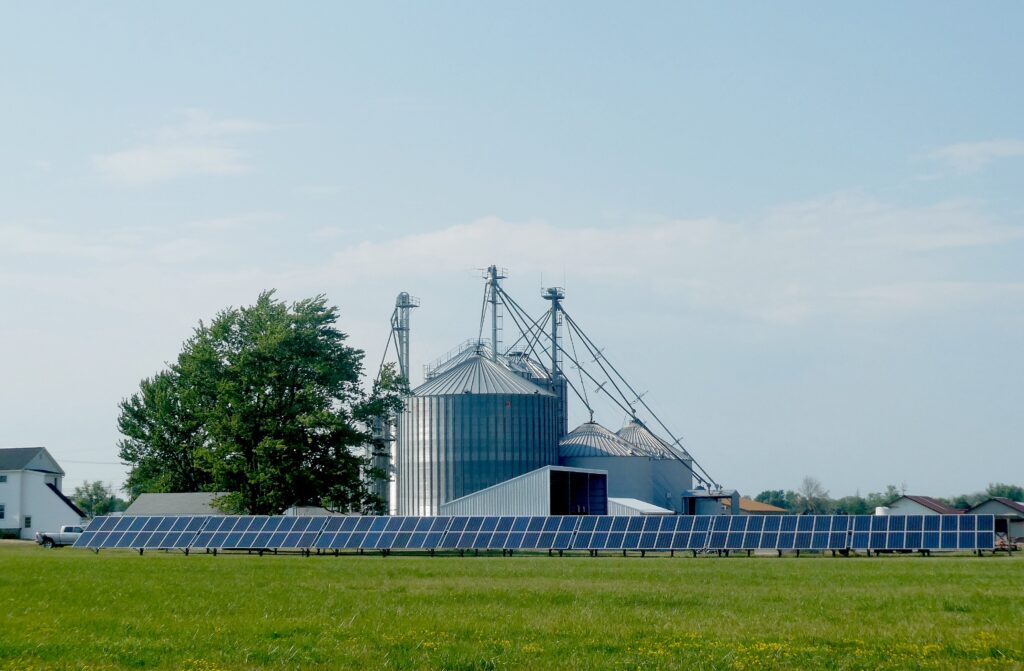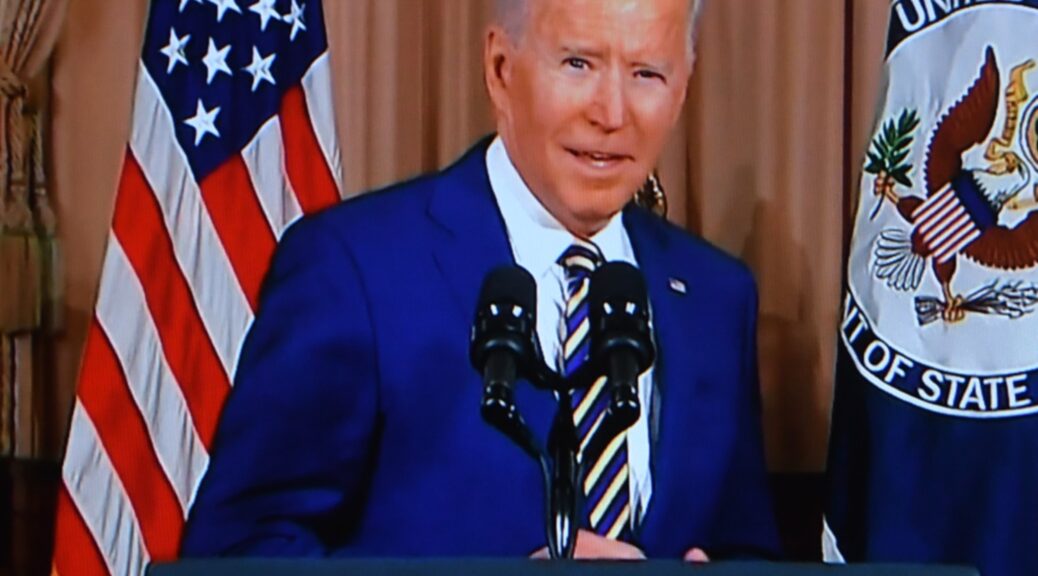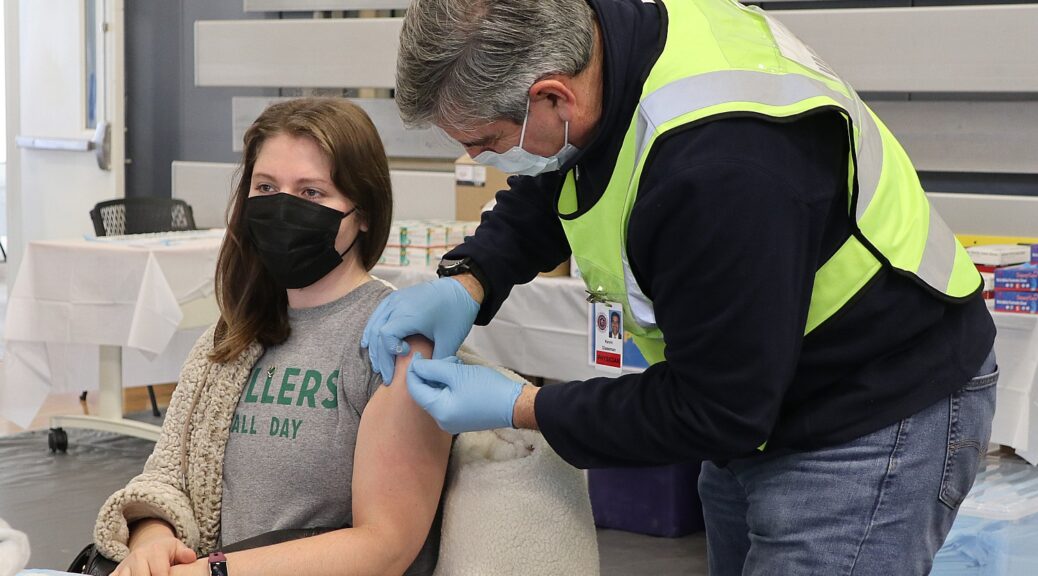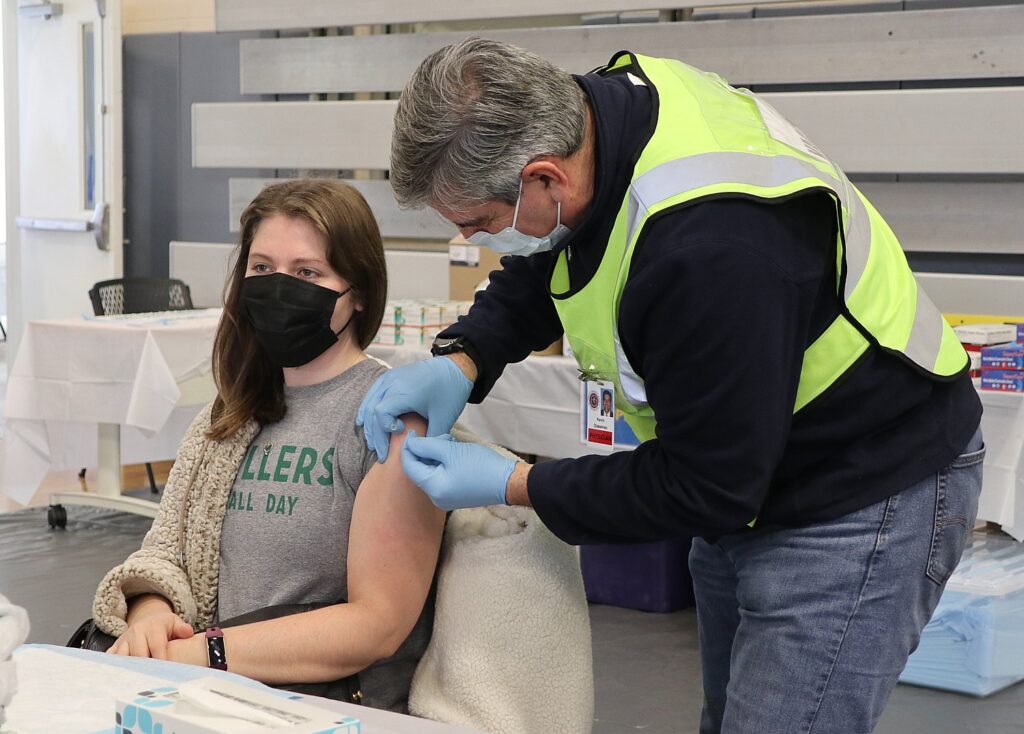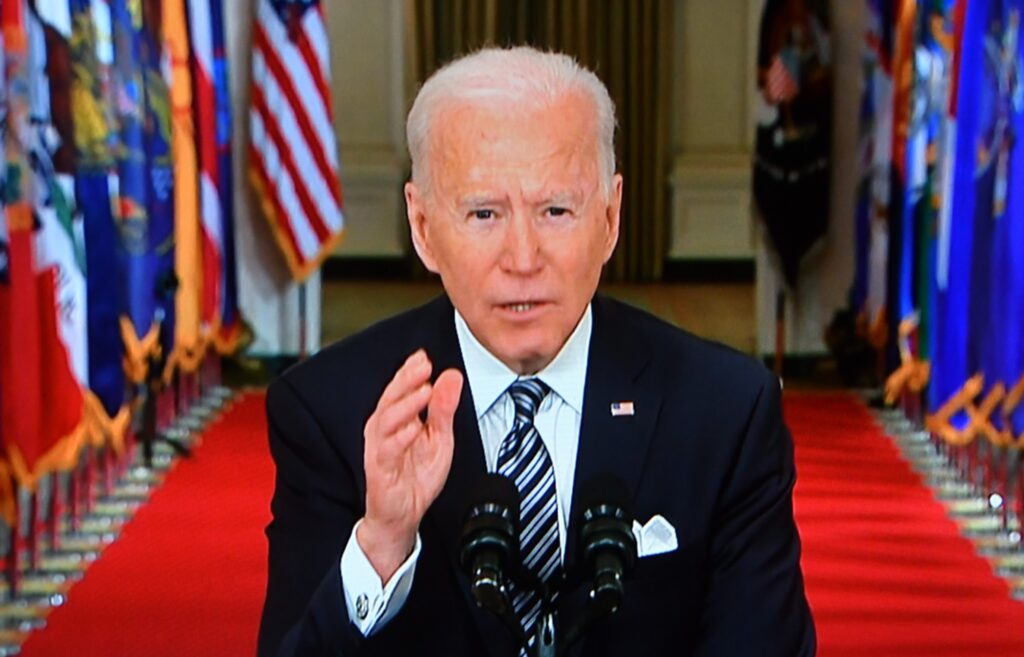
In his first prime time public address to the nation, coming exactly one year after the World Health Organization declared the coronavirus pandemic, one year since the nation shut down, and just hours after signing what is being hailed as the “historic,” “transformative” $1.9 trillion American Rescue Plan, President Biden announced the next phase of a war-time effort to vaccinate the U.S. population, with the goal of getting the nation closer to normal by July 4th, Independence Day.
“The President launched a new, comprehensive strategy to beat this pandemic on January 21, 2021. In the subsequent 7 weeks, we’ve delivered over 81 million vaccinations to Americans — today, more people are once again able to visit their loved ones. There is more work to do and today, the President is outlining the next phase of his whole of government strategy to put the pandemic behind us,” the White House stated.
It is fitting to declare a war-time effort to combat COVID since in just one year, more Americans have died of COVID than in decades of fighting wars on foreign soil. “As of now, the total deaths in America: 527,726. That’s more deaths than in World War One, World War Two, the Vietnam War, and 9/11 combined,” as Biden noted in his address, pulling a paper with the running total count written on it. Biden has had to pick up slack after months and months of the prior administration dismissing, lying, even sabotaging efforts to contain the virus which has infected 30 million – far exceeding any other nation in the world as a percentage of population – holding massive rallies and discouraging mask-wearing, social distancing, and even pursuing legal action to prevent localities from using public health measures like lockdowns.
This is from the White House:
The President announced that in the coming weeks, the Administration will:
Make every adult in the U.S. eligible for vaccination no later than May 1. Today, in the next phase of our vaccination effort, the President will announce that he will direct states, Tribes, and territories to make all adults eligible for the COVID-19 vaccine no later than May 1st. The White House COVID-19 Response Team has concluded that our accelerated vaccination efforts will enable prioritized vaccinations to be far enough along by end of April that all eligibility restrictions for vaccinations can be lifted by May 1st.
Once all Americans are eligible to be vaccinated, the Administration will ensure that every adult is actually able to get the vaccine by:
Increasing the number of places Americans can get vaccinated. With the resources available through President Biden’s American Rescue Plan, the Administration will ramp up efforts to create more places for people to get vaccinated, reaching the hardest-hit and hardest to reach populations.
Community Health Centers: Today, the Administration announced that over the next six weeks the Administration will deliver vaccines directly to up to an additional 700 community health centers that reach underserved communities, increasing the total number of participating community health centers across the country to 950. These health centers serve low income and minority patients, provide services to rural communities and Tribal communities, and many will utilize mobile vans to deliver services.
Pharmacies: The Administration will double the number of pharmacies participating in the federal pharmacy program, making the vaccine available at more than 20,000 pharmacies in locations convenient to all Americans. The Administration is directing pharmacies to expand mobile operations into the hardest hit communities to reach more people.
Community Vaccination Centers: The Administration will more than double the number of federally-run mass vaccination centers, run by FEMA, the U.S. military, and other federal agencies in partnership with states, to ensure that we reach the hardest-hit communities in this historic effort. Many of these sites will be the home base for mobile units that will travel into local communities to provide vaccines directly in underserved populations. With these mobile clinics, we’ll work with states to make up to one-third of each site’s daily vaccinations available directly in the hardest-hit neighborhoods. Thanks to the American Rescue Plan, the Administration will also increase support for state and local-run community vaccination centers. As a result of these added investments community vaccination centers will be capable of administering hundreds of thousands of shots a day, building on the nearly 600 centers across the country already operating with federal support.
Increasing the number of people providing and supporting vaccinations. Today, President Biden will announce the deployment of more than 4,000 active duty troops to support vaccination efforts, bringing the total to over 6,000 in all. Tomorrow, the Administration will expand the pool of qualified professionals able to administer shots to include: Dentists, advanced and intermediate Emergency Medical Technicians, Midwives, Optometrists, Paramedics, Physician Assistants, Podiatrists, Respiratory Therapists, and Veterinarians, as well as medical students, nursing students, and other healthcare students in the previously listed professions under the Public Readiness and Emergency Preparedness Act. The U.S. Department of Health & Human Services will launch a new website to help individuals determine whether they are eligible to sign up to volunteer to administer shots.
Providing tools to make it easier for individuals to find a vaccine. The President will announce steps to make it easier for individuals to find a vaccine near them and address some of the barriers to getting vaccinated.
Find a Vaccination Website: By May 1st, as vaccines are available in more places, the Administration will launch a federally-supported website that will show the locations near them that have vaccines.
1-800 Number: To offer a tool for those who may lack Internet access, we will launch a call center by May 1st to provide guidance and assistance with finding a vaccine.
Technical Support to Improve Existing State Websites: Since many Americans use their state websites to schedule appointments, the Administration will also deploy technology teams to states who need assistance to improve their websites.
Our COVID-19 efforts will always be guided by science and the step-by-step approaches to get Americans back to the important people and activities in their lives that they have been missing. Today, the President announced that the Centers for Disease Control and Prevention (CDC) will continue to issue clear guidance for individuals on what they can do after being fully vaccinated.
Additional CDC Guidance on Activities for the Vaccinated: As we approach July 4th, based on the best available science and the pace of vaccinations, the CDC will provide public health guidance for people as they travel, participate in small gatherings, and go to work and houses of worship.
Benefits of Vaccination: CDC guidance and other CDC messaging will make the benefits of vaccination clear to encourage more Americans to get vaccinated.
Take New Steps to Reopen the Nation’s Schools. Reopening schools safely is critical to getting closer to normal. Tonight, President Biden laid out new steps in the school reopening effort.
Ensure schools have the resources they need: Now that the American Rescue Plan has passed, the nearly $130 billion to safely reopen schools for in-person instruction will begin to be distributed this month by the Department of Education. These dollars will help schools pay for the critical supplies to implement the Centers for Disease Control and Prevention’s (CDC) recommended mitigation strategies, hire more staff – and avoid laying off current staff – to accommodate the need for smaller class sizes due to physical distancing, and support children’s academic, social and emotional needs after a challenging year.
Expand screening testing in schools: We will immediately take steps to help schools implement regular screening testing to assist them in safely reopening classrooms, including through tests and test supplies as well as implementation assistance to make it easier for schools to adopt a testing program. This month, HHS will award $650 million in an initial investment in expanding K-8 school testing and testing in underserved congregate settings through new regional coordinating centers that will identify existing testing capacity, match it up to an area of need and support testing. This effort will begin to bring more testing to teachers, staff, and students and serve as a bridge to the comprehensive testing investment in the American Rescue Plan that is critical to get the pandemic under control.
Provide guidance and support: The Department of Education (ED) will host a national Safe School Reopening Summit this month that will bring together students, teachers, families, community organizations, and state, local, or school leadership to provide assistance in implementing the CDC K-12 operational strategy for in-person instruction and supporting the academic, social, and emotional well-being of students. ED also is launching the “Safer Schools and Campuses Best Practices Clearinghouse” called for in President Biden’s Executive Order. The Clearinghouse will highlight lessons learned and best practices that can help schools and districts identify opportunities to best utilize American Rescue Plan funds to meet their individual needs. Next month, ED will release Volume 2 of its K-12 COVID-19 Handbook for districts, schools, and educators with strategies to address the impact of COVID-19 on students, educators, and staff, especially for historically underserved students and communities that have been hit hardest by the pandemic.
Help educators get vaccinated: Throughout March, the Administration will advance our efforts to support educators, school staff and childcare workers getting vaccinated. Last week, the President announced that he is using the Administration’s authority to direct states to make Pre-K-12 school staff and child care workers eligible for vaccinations and that the Administration will prioritize educators in the federal pharmacy program. The President challenged all 50 states to get Pre-K-12 school staff and child care workers their first shot by the end of this month. To help meet that goal, the Administration is working with education leaders, advocates, child care providers, community leaders, states and others to help reach educators and to disseminate toolkits and other resources to help amplify the importance of getting vaccinated.
Continue Effort to Combat Variants and Spread of COVID-19: As we work to get more people vaccinated, we will continue to take steps to combat the spread of variants including expanding testing and genomic sequencing.
Expand testing to help stop the spread of COVID-19. While testing to date has been primarily focused on individuals with symptoms and potential exposures – and this testing remains critical – we will expand testing to ensure that we are identifying asymptomatic infection early to stop the spread. With the nearly $50 billion in testing funding in the American Rescue Plan, the Administration will invest in screening testing to help schools reopen safely, expand testing in congregate settings like shelters for individuals experiencing homelessness, prisons, and other settings where individuals live in close quarters. This funding also will help to close supply gaps and address critical raw material shortages that have plagued the testing supply chain. And, with new investments in our manufacturing base, we will be able to increase easier to use and more affordable point-of-care and at-home testing.
Identify variants by expanding genomic sequencing. Thanks to the American Rescue Plan’s $1.75 billion investment, we will dramatically expand our ability to sequence samples to identify, track, and mitigate emerging variants. This will build on the nearly $200 million that the Administration announced last month to grow the number of samples sequenced from 7,000 to approximately 25,000. Growing sample sizes will improve our ability to detect emerging variants and work to mitigate their spread.

